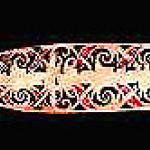Dance Music?
Don't let the title fool you. Music and dances in Malaysia are very different and were handed down from generations to generations. The variety of dances is amazing whilst the musical aspects are very true to the Malaysian heritage.
Music and dance goes hand-in-hand in the Malaysian culture. You can barely have music without seeing a dance and neither can you watch a dance that does not come accompanied by traditional music. The locals themselves are the main influential factor in most Malaysian dances although there are many more that are influenced by the Malaysian cultural components. Malaysia's music and dance have evolved from a basic art form into what is today's complex and mesmerizing entertainment.
Malaysia's traditional music focuses on the gamelan more than anything else. The gamelan is a stringed instrument that originates from Indonesia. It gives out an ethereal muffled sound. Accompanying the songs of the gamelan are the Malaysian drums, which are musical items that gives out lilting, hypnotic beats. In the past, the Malaysian drums are mostly used as background instruments for court dances.
However, these drums did not start as a musical instrument. In the olden days, drums were just objects that gives out rhythmic beats. Their existence was more of a necessity than an entertainment. Just like the people of Ghana in the past, drums was used extensively as a form of communication. In Malaysia, the rebana ubi (or giant drums) take on the role of a communication tool, where rhythmic messages were sent from hill to hill across long distances. Be it a warning sign or a wedding announcement, drums were used to get the message across via different rhythms depicted in each drumbeat. However, with the advent of telephone, radio and television, the true purpose of the rebana ubi had been shelved aside and is now a ceremonial instrument. If you are interested to learn more of this, you may visit Kelantan some time around May or June for the Giant Drum Festival.
Music aside, Malaysian dances are an elegant art form as well, especially so for the silat. Silat is a form of dance that took its origins from a deadly martial art. In this martial art, it teaches the person to indulge in a weaponless form of self-defense. Now, silat is more of a dance that is displayed at weddings and other festivals instead of a fight sequence. With the accompanying sounds of the drums and other musical instruments, silat is then performed for the viewers to enjoy!
While a silat performance may be interesting to watch, yet the candle dance is a truly hypnotic and breathtaking art. In the candle dance, the dancers hold candles that are placed on small plates, one on each hand. As the dancers sway to the music with graceful curves and movements, the delicate candle flames bobbing in tune with the music leaves the observer feeling mesmerized and trance-like.
Of course, the most famous dance of all in Malaysia is the joget. Joget is a lively dance with an upbeat tempo. In joget, performers are made up of couples that must combine fast, graceful movements with a dash of humor! The origins of the joget were derived from the Portuguese folk dance, which came about during the era of the spice trade in Melaka.
Malaysia's music and dance does not stop at just these two. Throw in a little drama and you will get a deeper dose of the Malay culture. 'Participant' in this category includes the highly appealing dance drama known as Mak Yong. This is without a doubt the most captivating dance drama in Malaysia. Mak Yong is a classic court entertainment, one that combines a display of dance, music and drama. Most of the time, a Mak Yong entertainment includes stories of romance, some operatic singing and lots of humor!
Over in East Malaysia, there is another popular dance in Sarawak widely known as Datuk Julud. A Datuk Julud is more than just a dance. It tells a story of the happiness of a prince when he was blessed with a grandson, depicted in each movement and turn. This is an ancient tradition. Very soon, this wondrous divine blessing caught on with the Kenyah tribe in Sarawak and soon, this dance form became a favorite amongst them. The musical instrument used in Datuk Julud is the sape. The sape is used to perform dance beats that are frequently accompanied by the clapping of hands and singing.
Today, times have changed. Although Malaysians have maintained most of their traditional beliefs and heritage, yet the touch of modernization had already set their fingers into the music and dance. Instead of the uninterrupted monotonous beats of the ancient drums, modern synthesizers have also made an appearance and are found to be accompanying the gamelan and drums. However, this is not a bad thing as culture and heritage is maintained as it grows along with modern times.
* * * * *
 ThingsAsian
ThingsAsian















